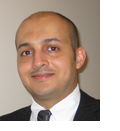
|
A member service that keeps you up-to-date on important new literature relevant to your practice.

|
|
JCDA has once again partnered with members of the graduate prosthodontics and periodontology programs at the University of Toronto faculty of dentistry, headed by Drs. Asbjørn Jokstad and Jim Lai respectively. Under the guidance of Dr. Jokstad, a JCDA editorial consultant, these residents provide their critical appraisal of recent articles of interest in the prosthodontics and periodontology literature.
You can read a brief message from Dr. Jokstad, in which he explains the genesis, format and rationale of the department’s literature review seminars.
JCDA would like to gratefully acknowledge the publishers of the selected articles, who have granted free access to the full-text papers until August 14, 2011. Follow the links in the Notes and News sidebar to discover more about these publications.
Yours sincerely,
Dr. John P. O'Keefe
Editor-in-chief
jokeefe@cda-adc.ca
|
|
|



The following 4 articles were edited and critically appraised by Dr. Asbjørn Jokstad and the residents of the University of Toronto graduate prosthodontics and periodontology programs.

|
|
|

Dr. Daniel Kobric, a member of the University of Toronto graduate periodontology program, selected:
Safii SH, Palmer RM, Wilson RF. Risk of implant failure and marginal bone loss in subjects with a history of periodontitis: a systematic review and meta-analysis. Clin Implant Dent Relat Res. 2010;12:165-74.
Full-text access to this article has expired.
JCDA Clinical Pearl:
-
Patients with a history of periodontitis may be at higher risk for adverse outcomes, such as increased peri-implant marginal bone loss and implant failure, following implant therapies.
What is the main clinical question addressed in the paper?
What is the risk for marginal bone loss around dental implants or implant failure in subjects with a history of periodontitis compared to subjects with a healthy periodontium?
What is the current clinical “state of practice” or “state of understanding”?
There may be an increased risk of marginal bone loss or implant failure in those with a history of periodontal disease.
Why is it important for the clinical question to be answered?
Patients with a history of tooth loss due to periodontitis who seek our assistance deserve to know all the risks involved with placing dental implants and what they can do to minimize their risk. For instance, although it is a statistically rare event, failure of the implants is one risk associated with the procedure.
What is the main conclusion of the paper?
There is a moderate amount of evidence suggesting that people with a history of periodontitis are at greater risk for implant failure and marginal bone loss.
What is your assessment of the quality of the paper and the underlying evidence?
This is a high-quality systematic review. The results showed that there is about twice as much crestal bone loss in patients with a history of periodontitis. For the risk of implant failure, the range is 0% to 3.3% for healthy individuals and 1.6% to 11.2% for those who are periodontally compromised.
For implant survival, the results favoured patients with no prior history of periodontitis. Some of the studies did not clearly describe the smoking status and/or occlusion of the participants. These are known factors for implant success and, as such, may have confounded the results of the meta-analyses.
What should a clinician take away from the study findings, in terms of potential impact on clinical practice?
Clinicians can advise patients who have lost teeth due to periodontal disease that they may have a slightly greater risk of implant failure than other healthy persons. However, maintaining a healthy periodontium can reduce that risk.
|
|

|
|
|

Dr. Mohammed Zahran, a member of the University of Toronto graduate prosthodontics program, selected:
Hasanain F, Durham J, Moufti A, Steen IN, Wassell RW. Adapting the diagnostic definitions of the RDC/TMD to routine clinical practice: a feasibility study. J Dent. 2009;37:955-62.
Full-text access to this article has expired.
JCDA Clinical Pearl:
-
The use of the Clinical Examination Protocol-TMD (CEP-TMD) seems to be a feasible alternative to the Research Diagnostic Criteria for Temporomandibular Disorders (RDC/TMD) for diagnostic purposes inpatients suspected to have TMD.
What is the main clinical question addressed in the paper?
What is the reliability, validity and feasibility of a new method of physically diagnosing temporomandibular disorders (TMD) designed for routine clinical use?
What is the current clinical “state of practice” or “state of understanding”?
The current gold standard diagnostic tool for TMD is the Research Diagnostic Criteria for Temporomandibular Disorders (RDC/TMD).
Why is it important for the clinical question to be answered?
The RDC/TMD was originally developed to be used for research purposes. It would be beneficial to have a new tool to help simplify the diagnosis of TMD in routine dental practice.
What is the main conclusion of the paper?
The diagnostic capabilities of the CEP-TMD are comparable to the RDC/TMD. This provides a convenient and intuitive approach for dentists to physically diagnose TMD in clinical practice.
What is your assessment of the quality of the paper and the underlying evidence?
This cross-sectional study is well designed overall, except that its reliability measurement did not account for intra-examiner reliability (i.e., by having the same examiner repeat the diagnosis at different times).
What should a clinician take away from the study findings, in terms of potential impact on clinical practice?
The CEP-TMD can be used to help a clinician establish a TMD diagnosis in routine clinical setting.
Related Resources:
Details on the RDC/TMD and CEP-TMD can be viewed at www.rdc-tmdinternational.org/ and www.ncl.ac.uk/dental/AppliedOcclusion/. These websites also provide history and examination forms.
|
|
 |
|
|

Dr. Eszter Somogyi-Ganss, a member of the University of Toronto graduate prosthodontics program, selected:
Fricton J, Look JO, Wright E, Alencar FG Jr, Chen H, Lang M, et al. Systematic review and meta-analysis of randomized controlled trials evaluating intraoral orthopedic appliances for temporomandibular disorders. J Orofac Pain. 2010;24:237-54.
Full-text access to this article has expired.
JCDA Clinical Pearl:
-
A patient with TMD may experience long-term pain relief by using a hard stabilization appliance or other types of intraoral appliances.
What is the main clinical question addressed in the paper?
What is the efficacy of intraoral appliances to reduce pain in patients with temporomandibular disorders (TMDs)?
What is the current clinical “state of practice” or “state of understanding”?
There are several types of appliances currently used for TMDs such as stabilization appliances made of hard and soft acrylic, anterior positioning appliances and anterior bite appliances. Despite their widespread use, there is debate regarding their safety and efficacy in a clinical setting.
Why is it important for the clinical question to be answered?
The large number of appliances on the market to treat patients with TMD, and the accompanying manufacturer claims, make it difficult to know what scientific evidence shows relative advantages between appliances.
What is the main conclusion of the paper?
Hard stabilization appliances, when adjusted properly, have some efficacy in the treatment of TMD pain compared to not using any appliances or no treatment at all. The hard stabilization appliance is just as effective as behavioural therapies and pharmacological and acupuncture treatments, without the adverse effects associated with some other appliances.
What is your assessment of the quality of the paper and the underlying evidence?
The methodological quality of the systematic review is high and the contents provide good evidence for optimal management of patients with TMD problems.
What should a clinician take away from the study findings, in terms of potential impact on clinical practice?
The prudent practitioner can use hard stabilization or other appliances to treat TMD but should monitor patients closely to prevent adverse effects.
|
|
 |
|
|

Dr. Carol Forster, a member of the University of Toronto graduate periodontology program, selected:
Walter MH, Weber A, Marré B, Gitt I, Gerss J, Hannak W, et al. The randomized shortened dental arch study: tooth loss. J Dent Res. 2010;89:818-22.
Full-text access to this article has expired.
JCDA Clinical Pearl:
-
Patients with missing posterior teeth can benefit from receiving a tooth-retained partial removable dental prosthesis, with a minimal risk of further tooth loss.
What is the main clinical question addressed in the paper?
How does the incidence of tooth loss compare between cases restored based on the shortened dental arch (SDA) concept (i.e., no molar replacement) versus cases restored by replacing missing molars with a removable dental prosthesis.
What is the current clinical “state of practice” or “state of understanding”?
Most studies on SDA restorations are based on questionnaires or retrospective clinical trials, which conclude that the concept deserves serious consideration in treatment planning. However, there is a need for continued clinical research within properly designed experimental studies, as there is little research on the long-term success of SDA restorations.
Why is it important for the clinical question to be answered?
The concept of an SDA may be a cost-effective option that can also provide an acceptable oral function for the patient.
What is the main conclusion of the paper?
Tooth loss and other clinical parameters are not (or only weakly) associated with the type of prosthetic treatment in SDA cases at the 3-year time point.
What is your assessment of the quality of the paper and the underlying evidence?
This is a well-designed 3-year randomized control trial. However, it would have been interesting if the authors included implant restorations as an intervention (the rationale for excluding this treatment is briefly addressed in the Discussion section).
What should a clinician take away from the study findings, in terms of potential impact on clinical practice?
According to the 3-year results, SDAs may be a cost-effective, reliable solution for patients. Clinicians should be aware of the importance of considering patient preferences in their clinical decision-making. Results from the 5-year time point are scheduled to be published at a later date.
Related Resources:
Other articles reporting on the same patient cohort include:
Luthardt RG, Marré B, Heinecke A, Gerss J, Aggstaller H, Busche E, et al. The Randomized Shortened Dental Arch study (RaSDA): design and protocol. Trials. 2010;11:15.
Wolfart S, Heydecke G, Luthardt RG, Marré B, Freesmeyer WB, Stark H, et al. Effects of prosthetic treatment for shortened dental arches on oral health-related quality of life, self-reports of pain and jaw disability: results from the pilot-phase of a randomized multicentre trial. J Oral Rehabil .2005;32(11):815-22.
|

Message from Dr. Asbjørn Jokstad

The volume of new research literature is overwhelming. Colleagues apply different strategies to cope with this information overflow. At the U of T prosthodontics residency program, we’ve established a concept of collective responsibility for updating each other on the most groundbreaking research within the discipline.
During a lively 90-minute seminar held each week, 2 prosthodontics and 2 periodontology residents present and defend what they consider the best articles among 25 selected specialty publications. In a competitive yet friendly atmosphere, the articles are critically appraised and debated among the group.
The residents judge the articles on originality, novelty of analysis and clarity of presentation. They cover all aspects related to etiology, diagnosis, therapy, prevention and prognosis. Some of the selected articles present important new findings that dentists or the dental team could consider implementing into daily practice.
Working in consultation with JCDA, we will strive to bring Canadian dentists what we consider the most significant and relevant developments for practice within the field of prosthodontics as well as the prosthodontics–periodontology interface.
Asbjørn Jokstad, DDS, PhD
Head of prosthodontics, faculty of dentistry,
University of Toronto
|
|
|
|
|

JCDA is the authoritative written voice of the Canadian Dental Association, providing dialogue between the national association and the dental community. It is dedicated to publishing worthy scientific and clinical articles and informing dentists of issues significant to the profession.

|

|

|
NOTES AND NEWS
Check out the publications featured in this issue
Clinical Implant Dentistry and Related Research
(publisher: Wiley-Blackwell)
Journal of Dentistry
(publisher: Elsevier)
Journal of Orofacial Pain
(publisher: Quintessence Publishing)
Journal of Dental Research
(publisher: SAGE)
|
Learn more about the University of Toronto prosthodontics and periodontology programs.
|
CDA Annual Convention: Navigating Tomorrow–New Visions, Historical Foundations
August 4-6 in Halifax, NS
CDA would like to express its appreciation to the following sponsors for their generous support of the 2011 CDA Convention. Platinum partners: CDSPI, Aurum Ceramic and American Express. Program partners: Nobel Biocare, Philips Consumer Lifestyle, Wrigley Canada, Scotiabank, 3M Canada Company and BMO. Visit www.cdaconvention2011.com
|
FDI Annual World Dental Congress: New Horizons in Oral Health Care
September 14-17 in Mexico City, Mexico
Register today for the 99th edition of the FDI Annual World Dental Congress. The FDI website has all accommodation, social and scientific events, and trade exhibition details. Visit www.fdi2011.org
|
Geriatric Dentistry: What Will Your Dental Practice Look Like in Ten Years?
October 15 in Toronto, ON
The University of Toronto is sponsoring a 1-day symposium on the treatment considerations for the elderly, with an emphasis on practical clinical procedures that can be implemented in the dental office. The symposium will feature 8 national experts from the field of geriatric dentistry. Visit
www.utcde.ca/course-pages-11-12/geriatric-dentistry.php
|
Search the JCDA Classified Ads
Looking for employment? Want to sell your practice? Classified ads offer the most effective way to reach all dentists and students in Canada.
|
Spread the word
Help spread the word about JCDA Express by telling your colleagues about it and reminding them to send CDA their email address.
reception@cda-adc.ca
|

|

|

|
|



